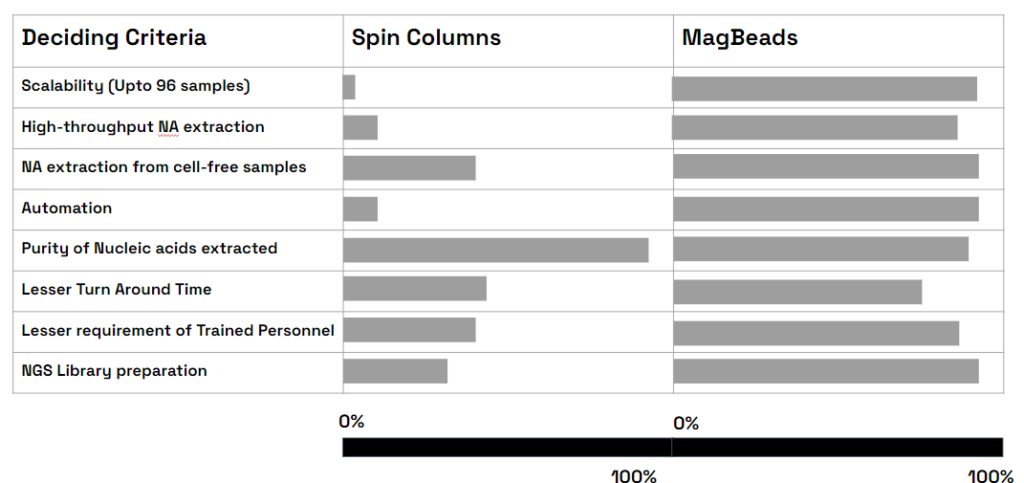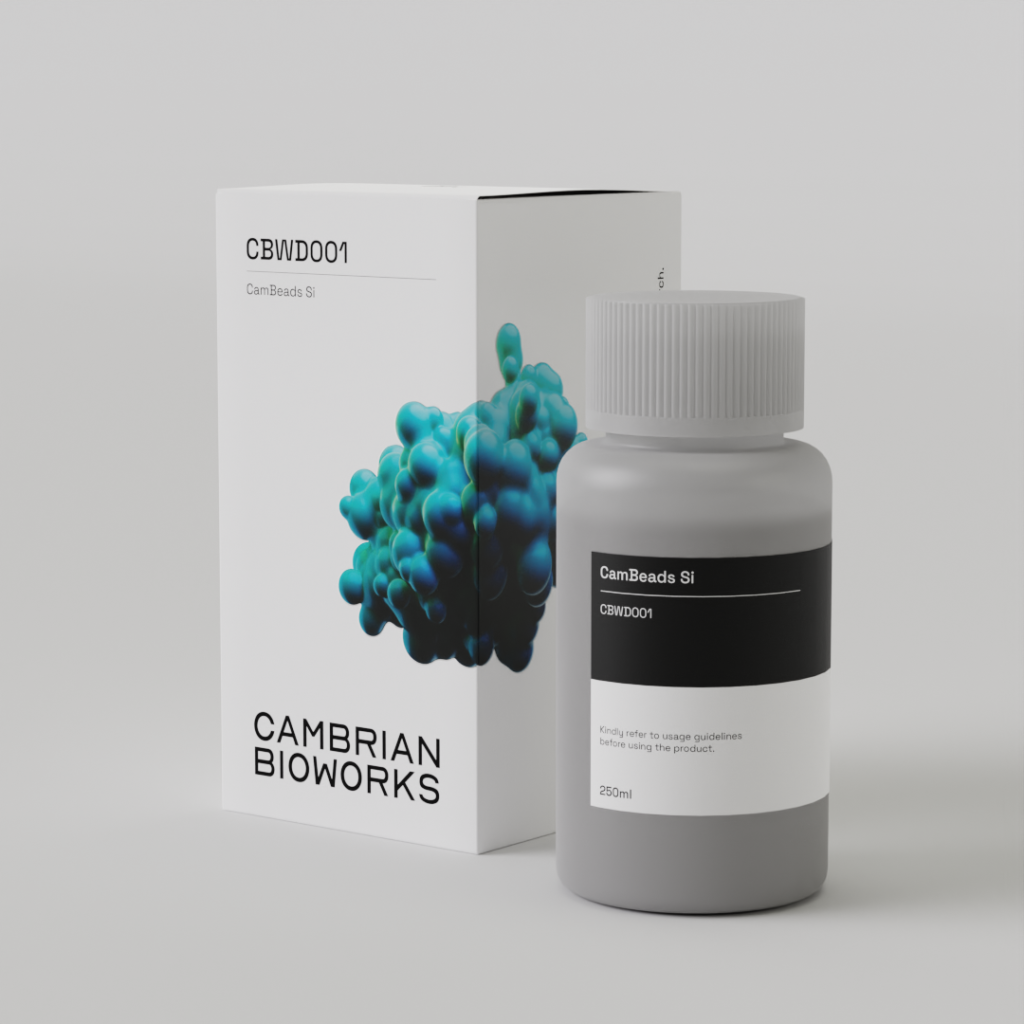The demand for rapid, sensitive molecular diagnostics has increased dramatically over the years. Diagnostic techniques are crucial in numerous fields, from understanding the genetic basis of diseases, and developing new treatments to agrigenomics, surveillance, and clinical trials.
Nucleic acid extraction is the primary step for many downstream applications such as library preparation, microarrays, RT-PCR, etc.
High-quality DNA samples with minimal contaminants and high integrity are vital for optimal NGS performance. Good quality DNA can maximize sequencing depth and accuracy.
Nucleic Acid Extraction Workflow
Extraction can be divided into four broad steps (these can be modulated depending on the sample and downstream applications):
-
- Cell Disruption
-
- Removal of membrane lipids, proteins
-
- Nucleic acid Purification
-
- Nucleic acid Concentration
Extractions are based on Solid-phase (SPE) techniques where nucleic acids are bound to a solid surface – such as a silica membrane or magnetic beads. The unwanted unbound materials are washed away, and the nucleic acids are detached from the solid phase.
Silicates have a high binding affinity for DNA under alkaline conditions and increased salt concentration. The silica surface is covered by positive ions, which enhances the binding of negatively charged DNA. NA can then be eluted from the silica matrix by hyposmotic solutions, such as nuclease-free water, or buffers like alkaline Tris-EDTA.
Devices Used in Extraction Methods
Isolation of genomic DNA and total RNA can use silica binding in either the column or magnetic bead format depending on the requirements of the user and the protocol.
Columns are well suited for basic applications, such as PCR and electrophoresis to check inserts in vector-based cloning.
Magnetic bead-based protocols can be automated with quick turnaround times, including DNA/RNA extraction for qPCR sequencing applications, and cfDNA for liquid biopsies (use low DNA amounts).

The More Convenient Platform for Nucleic Acid Extraction

How Do We Help?
Cambrian Spin Columns

CamBeads

Which of the two methods is beneficial for your standard laboratory extraction protocols? Try them both and see for yourself!
To get a free sample contact us at support@cambrianbioworks.com or +91 90356 74375.

